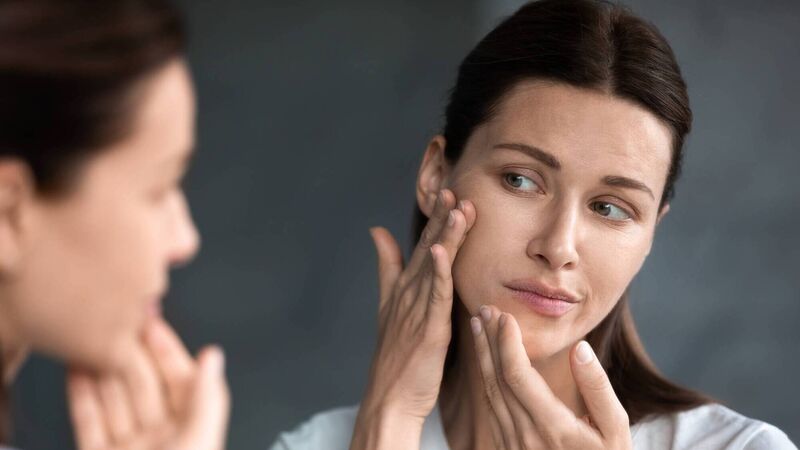The Skin Nerd: These are the skin conditions linked to endometriosis

Two recognised indicators of endometriosis are high levels of oestrogen and inflammation — both of which can also impact your skin health
If you suffer from endometriosis, you are not alone. This chronic, inflammatory gynecological condition affects a huge 155,000 in Ireland and 190 million women worldwide. Along with the potential to affect multiple parts of the body internally, the condition can have an impact on the skin.
Two recognised indicators of endometriosis are high levels of oestrogen and inflammation — both of which can also impact your skin health. Now, having high oestrogen levels and inflammation does not mean you definitely have endometriosis of course, so always seek advice from your GP if you are concerned. What might having both mean for the skin, you might ask? Well, having too much oestrogen in the body can spell trouble for the skin, causing a hormonal imbalance and potentially triggering breakouts or acne for some. As an inflammatory disease, inflammation is not only involved in the development of endometriosis, but the condition itself can cause inflammation in the body leading to inflammatory responses including irritation and rashes. Possibly due to a lack of research and understanding of the correlation between the condition and the skin, few skin conditions have been scientifically proven to be linked to the disease — however there are a select number that experts suggest are most likely to be connected to endometriosis:
Research has found that endometriosis sufferers have higher rates of atopic diseases such as eczema. In fact, an estimated 15% of endometriosis sufferers have eczema, which causes sore, cracked, itchy, scaly, and dry skin. Atopic diseases are those triggered by an allergic reaction. Another way that eczema can be triggered is via histamine intolerance — which is when you have too much histamine in your body and / or you are unable to break down the histamines. This can cause a build-up and give you allergy-like symptoms.
Studies have also suggested that people with endometriosis may possibly have a higher risk of developing psoriasis — an autoimmune condition that can cause dry, red, scaly patches of skin across the body.
A study from 2014 concluded that endometriosis is positively associated with severe teenage acne, finding that teenagers with hormonal acne had a 20% increased chance of endometriosis.
Experts often debate whether acne results from the condition or its treatment, which often includes hormonal contraceptives. Whilst the hormonal connection between both conditions seems apparent, more research is needed.
Many people with endometriosis report having allergies and skin reactions to medication. Endometriosis is also linked to hives (urticaria) — which are raised, itchy welts that appear on the skin. These patches cause itchiness and discomfort that can be intense and may even disrupt your sleep. If you are experiencing this, try to avoid scratching the site(s) as this leaves the skin vulnerable to infection. Instead, try to relieve the itch by taking antihistamines and applying soothing, anti-itch creams to the area.
In rare (less than 1% of) cases, cutaneous endometriosis will develop. This is a subtype of endometriosis where endometrial tissues grow on the skin. It can also develop in scars after gynecological or abdominal surgery. This can cause pain, swelling, itching and endometrial cells may also bleed throughout the menstrual cycle.
What you can do:
1. Seek medical advice. If you suspect you may have endometriosis, your GP should always be your first port of call for a diagnosis and advice.
2. Try an anti-inflammatory diet packed with a variety of vegetables, fruits, nuts, and oily fish to reduce inflammation. For ideas on balanced meal plans, consider visiting a nutritionist who can give you personalised, expert recommendations.
3. Manage your stress levels: Endometriosis can be exacerbated by stress and vice versa, so it pays to prioritise keeping your stress levels as low as possible. We can’t always prevent stressful situations, but building healthy habits such as regular exercise, getting enough sleep, and using relaxation techniques such as mindfulness or deep breathing can help your body find balance.
4. Include nourishing, anti-inflammatory ingredients within your routine to bring comfort and to help to reduce redness and irritation. This includes hyaluronic acid, ceramide and antioxidants Vitamin C and E.
: Whilst medical assistance and advice are paramount when it comes to endometriosis, skincare, healthy lifestyle habits, and chatting to a counsellor or support group can help manage the condition in the long-term.










